 |
SOS ENATTOS - E.G.O. ELF
Monitoring station Live data from SOS ENATTOS mine (NU), Italy, South Europe |
|
Maintained by: Alessandro
Cardini (Università di Cagliari), Giulio
Ballardin (EGO),
Rosario De Rosa (Università di Napoli), Domenico D'Urso (Università di Sassari), Irene Fiori (EGO), Federico Paoletti (INFN - Pisa), Maria Tringali (EGO). FFT processing by Renato Romero (www.vlf.it). |
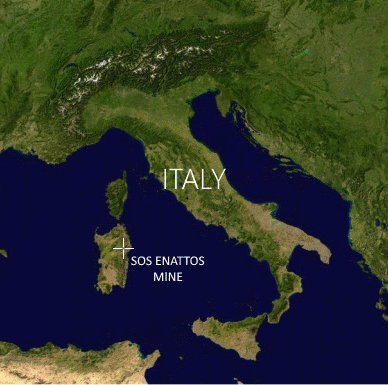 |
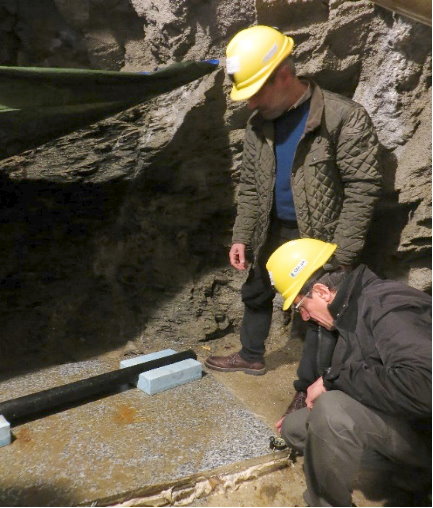 |
Since gravitational waves were first detected in 2015, the global network of interferometers (currently LIGO, Virgo, GEO, and KAGRA) has continuously improved its performance to increase our understanding of the phenomena of the universe. By their very nature, these interferometers have limitations in their ability to detect more distant events. Therefore, a new generation of gravitational antennas is planned, built underground to minimize the influence of natural and anthropogenic noise.
One of the world's quietest candidate sites, currently under analysis for its noise characteristics, is located in Sardinia within the Sos Enattos mines (40° 28' 0'' North , 9° 28' 59'' East). Here an underground network of sensors has been recently built for the study and characterization of the site, and among these a Metronix MFS-06 magnetometer is continuously acquired for the study of Schumann resonances, Geomagnetic Pulsations, and all natural signals.
The signal of this underground magnetometers, after being processed in the local network of sensors, is sent to INGV together with the seismic signals from SOE2. Magnetic data are then stored at EGO (mseed format) and finally also transformed into a low sampling rate RAW stream (250 sample/sec), and sent to Cumiana VLF-OpenLab monitoring station (500 km away) for the in-time analysis. There, a PC receives and processes it with SpectrumLab, in 5 different sessions and representations.
Signal coming from Metronix MFS-06e induction coil: EW reception. Eight hours, full view, with magnified PC1 frequency range 0.2 - 4 Hz on bottom.
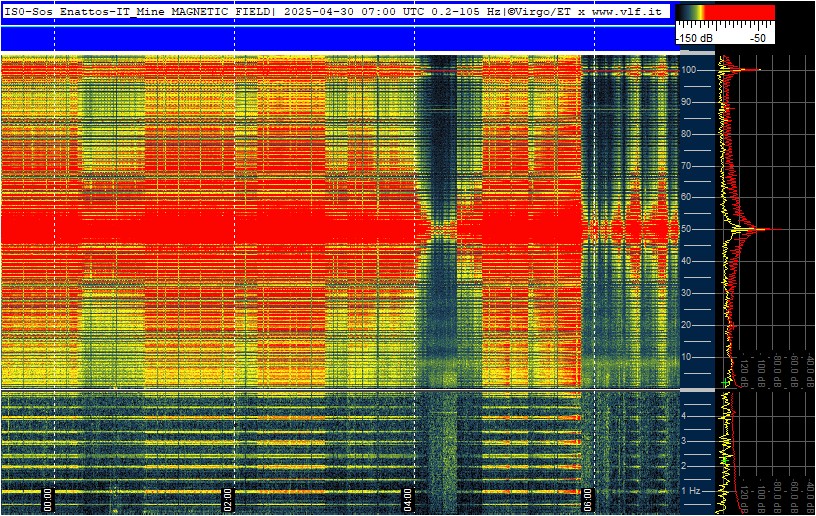
Door :9090 - session n. 33 - pan view 0.2 - 62 Hz - scroll time 40 s - FFT res 15.2 mHz
Signal coming from Metronix MFS-06e induction coil: EW reception. Signals level plot of low frequency range 1-5 Hz, 1st and 2nd Schumann resonances level, and total noise between 1 - 49 Hz.
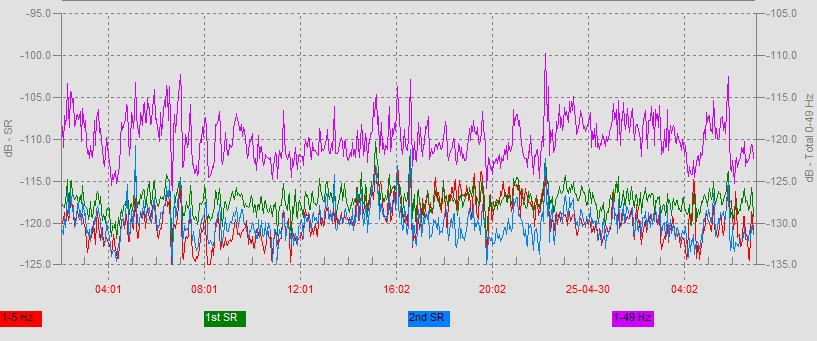
Door :9090 - session n. 33 - noise plot - 150 sec/step
Signal coming from Metronix MFS-06e induction coil: EW reception. Hourly multistrips spectrogram, useful for characterising fast-evolving signals below 50 Hz.
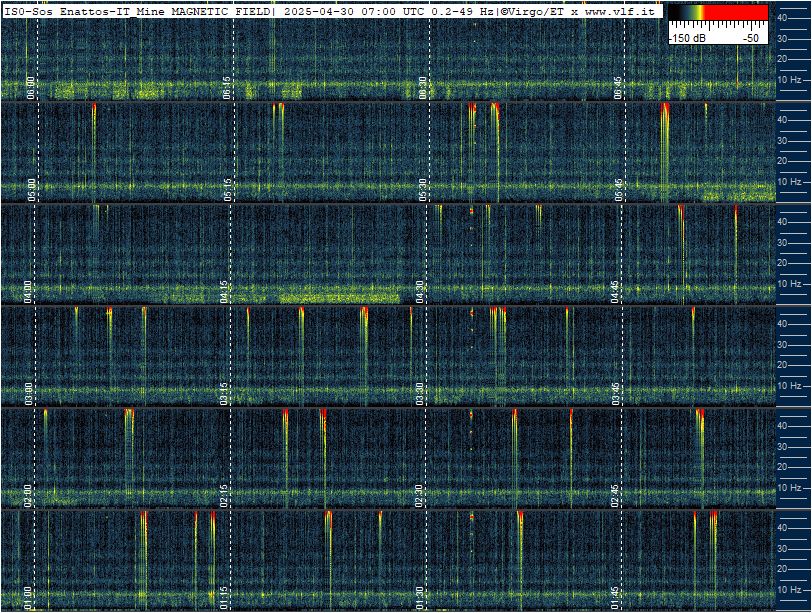
Signal coming from Metronix MFS-06e induction coil: EW reception. Daily multistrips spectrogram, useful for identifying daily signal periodicities below 4 Hz. Useful for identifying daily signal periodicities and for displaying geomagnetic pulsations PC1.
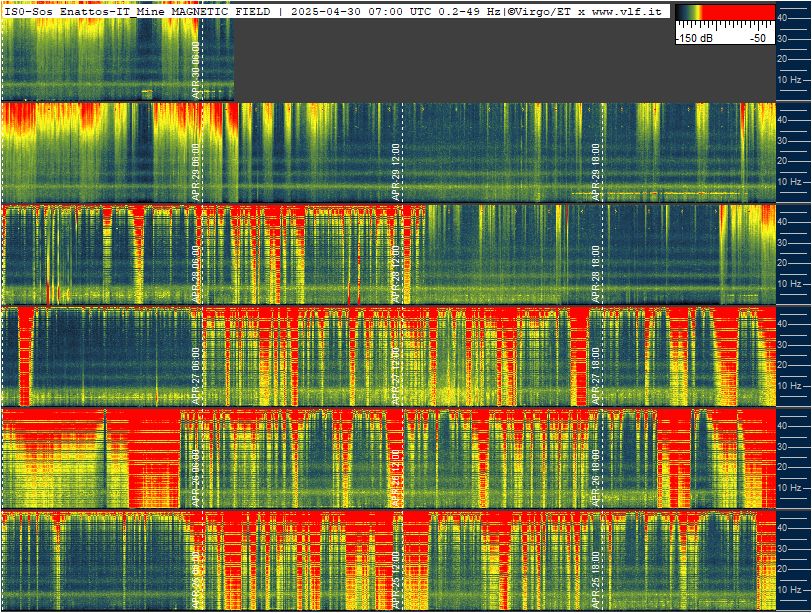
Door :9093 - session 34 - daily strips Schumann range - scroll time 108 s - FFT res 3.8 mHz
Signal coming from Metronix MFS-06e induction coil: EW reception. Daily multistrips spectrogram, useful for identifying daily signal periodicities below 50 Hz. Useful for identifying daily signal periodicities and for displaying Schumann resonances.
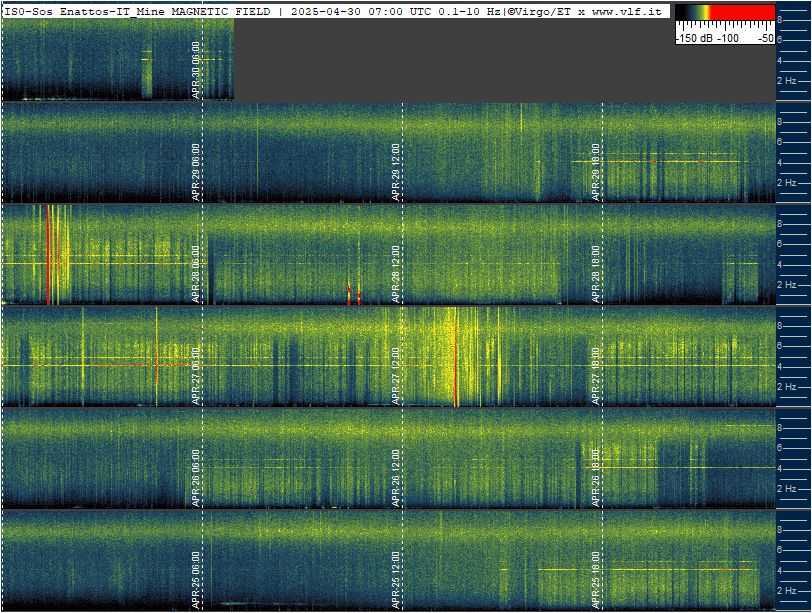
Door :9091 - session 32 - daily strips pulsation range - scroll time 108 s - FFT res 5.7 mHz
Real time situation about lighting strikes in Europe.
Courtesy of http://www.blitzortung.org
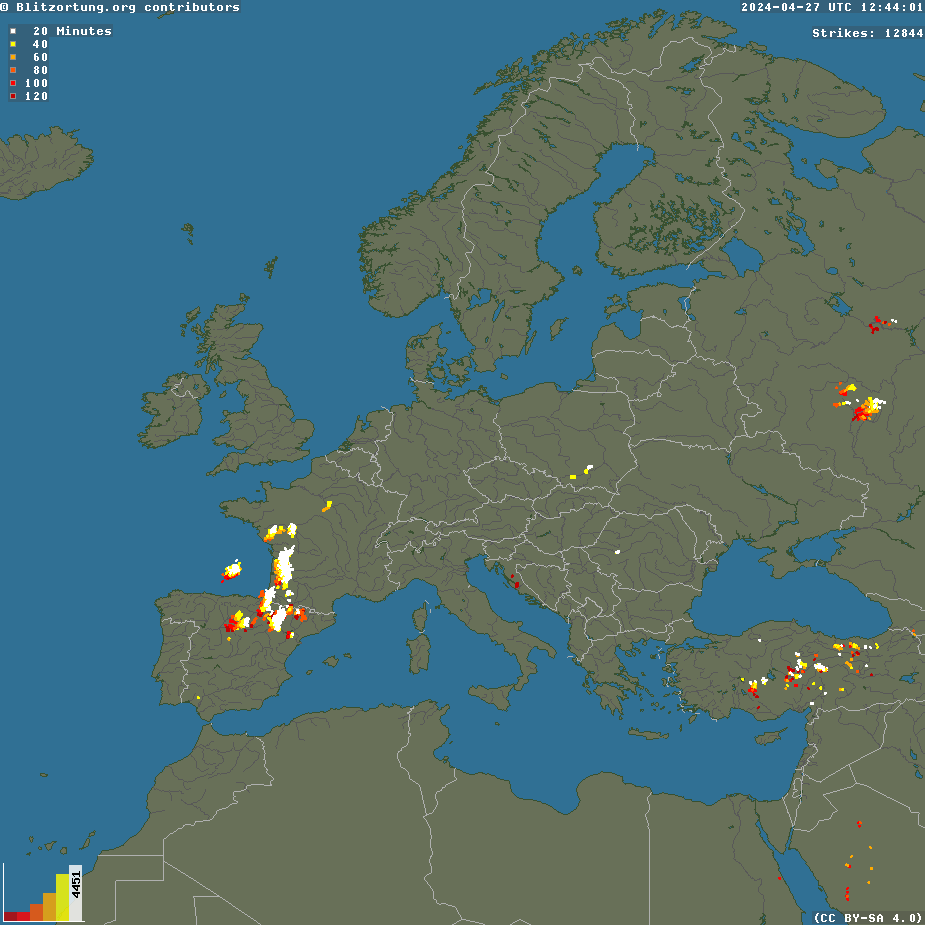
Unattended operations, signal conditioning, spectrograms and RDF functions are performed with SpectrumLab: https://www.qsl.net/dl4yhf/spectra1.html . Many thanks to Wolfgang Buscher for his support.
Return to www.vlf.it home page